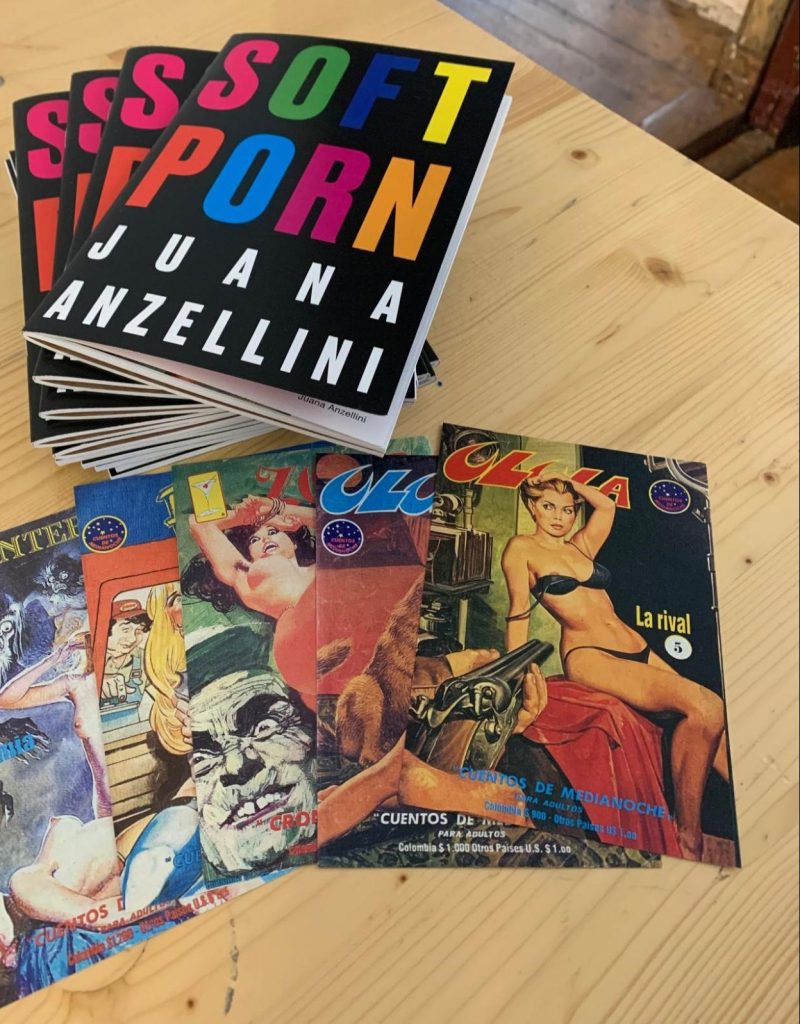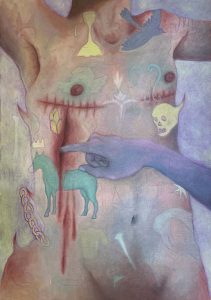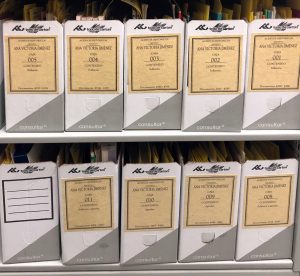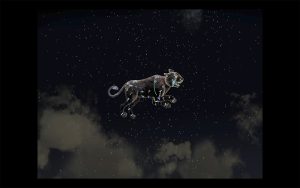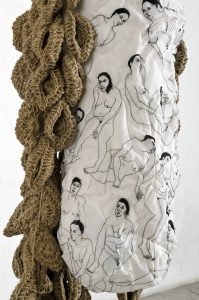A Conversation between Daniel Santiago Salguero and Juana Anzellini.[1]
Daniel: Juana, let’s talk about social media.
Juana: I use social media to give visibility to what I do. What happens to me, or what I make happen, is like a record—an archive.
She also tells me that she conducts interviews. She’s now on volume four; for each edition, she publishes one hundred copies in Spanish and German—Andere Koordinaten in German and Otras coordenadas in Spanish. She interviews people with visual impairments, and that’s her focus. The latest publication features an interview with a blind actress and dancer, for example. Volume three was with Gregorio Montoya, an English professor at Universidad Pedagógica and Universidad Javeriana. She has also interviewed a friend from Lithuania and a bureaucrat from Berlin.
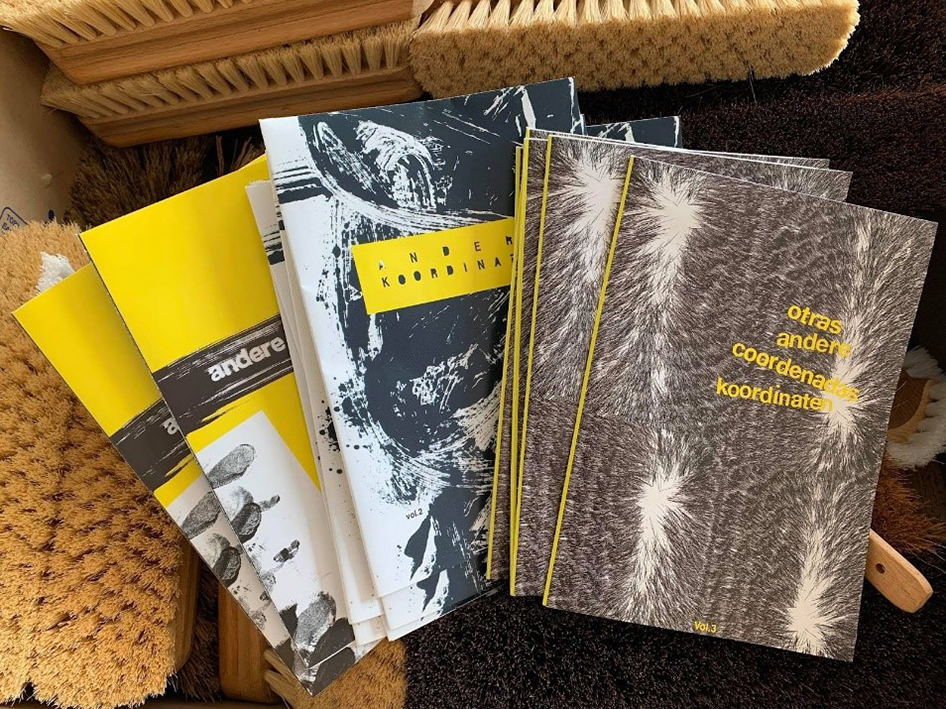
©Juana Anzellini
Blindness, among other important aspects, is a common thread in her work. Juana has had astigmatism since childhood and has undergone several surgeries—anesthetics and childhood trauma. She can’t focus with her right eye; she focuses and sees with her left.
A paradigm-shifting anecdote: A friend gave her The Country of the Blind by H.G. Wells. She had to stay in the library of Universidad de los Andes (where she studied Fine Arts in 2007) because of a traffic restriction[2], and she ended up reading the novel all at once. The story’s main character is named Bogotá, and it takes place in the Andes, where the character discovers a community of blind people. As she left the library, Juana met a blind man and spoke with him. The man knew the book and had other literary references. Gregorio. They kept meeting. He lives in Torres de Fenicia. (I should add that I lived there for a while with my family during my master’s studies at Universidad Nacional, and coincidentally, on the same floor but in the other tower, lived my thesis advisor, philosopher Adriana Urrea. I have fond memories of that time and that area of Bogotá.)
Juana likes to think of painting as “an accumulation of layers that one keeps making invisible; the final result is simply the last layer you paint.” She has been working on “that theme” for about fifteen years. “To remember a voice is to remember someone,” she says, adding, “blind people say that we are not faces, but voices.”
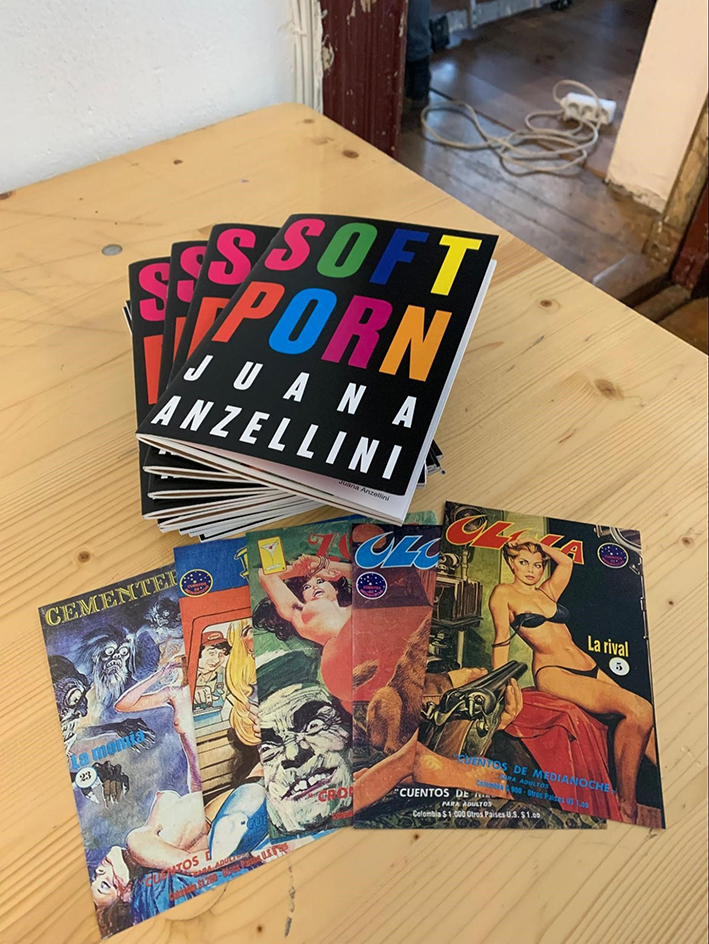
©Juana Anzellini
The following Saturday, she will launch her latest project, a catalog of the work she has created over the years. She invited others to contribute, provided they have works related to erotic themes, such as Andrés Felipe Uribe, Ana María Millán, and a Polish curator (Lawinia Rate), who suggested other artists. She enjoys opening her space to others. She is interested in expanding her spectrum—she is a small world, and that’s how she connects with other worlds and people. She invites those with expertise in specific areas to speak or do what they know, whether technically, conceptually, or in terms of abilities.
Soft Porn—that’s the title of her catalog project. It began with a conversation with Wilson Díaz[3] in Berlin in 2018 when he had a major scholarship. During that period, a nice group of diasporic artists formed, and there were lunches and discussions.
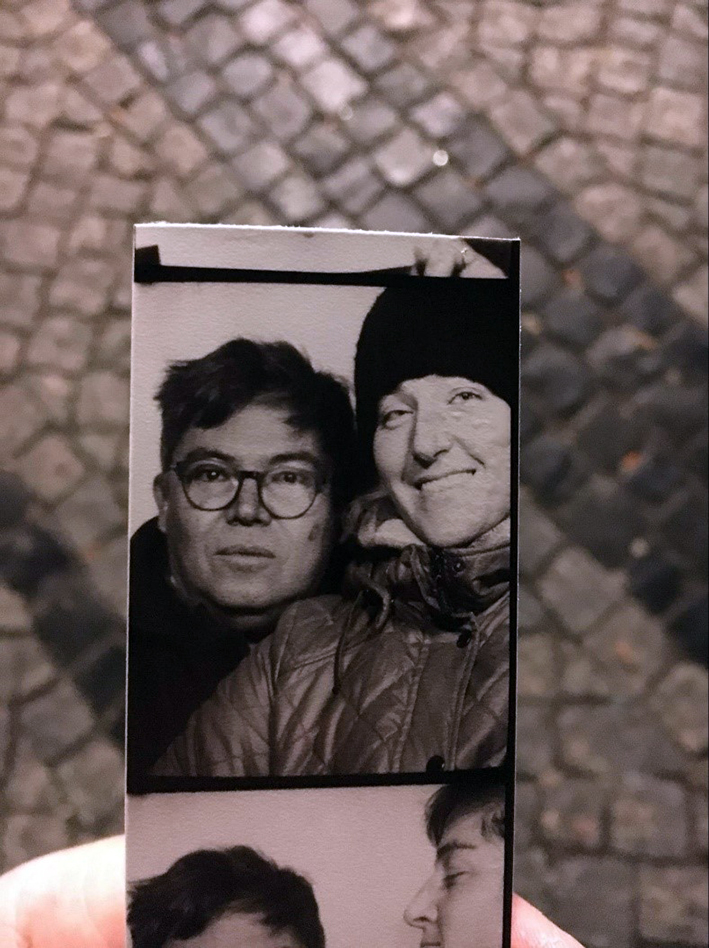
Juana y Wilson fotomatón. ©Juana Anzellini
In one of those conversations, Wilson shared his early connection with comics. Juana remembered a story: her Italian grandfather imported pornographic comics from the 1970s and 1980s to Colombia, translated them, and sold them. This business ran from 1990 to 2000. Wilson recalled that during his adolescence in Pitalito, his hometown in Huila, he rented the comics that Juana’s grandfather had imported and sold[4]. More recently, Juana’s aunt rediscovered this forgotten material and tried to make planners with it, even creating collages. However, the project failed, and the aunt shredded the entire material. Only one box remained, which Juana recently found in the attic of her aunt’s house. All of this became a topic of conversation between Juana and Wilson in Berlin.
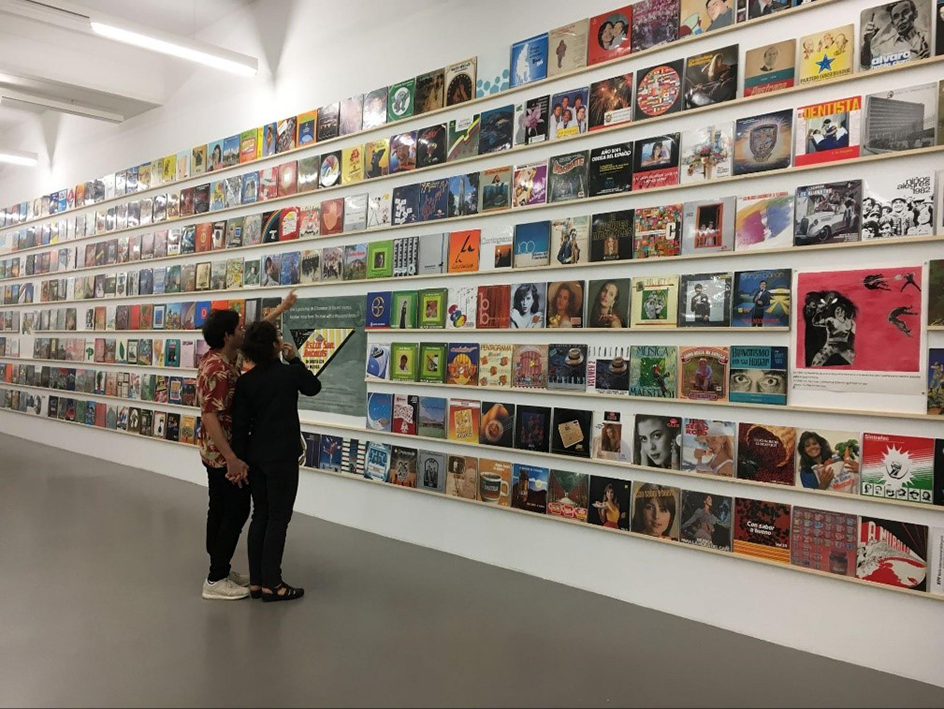
©Juana Anzellini – Exposición de Wilson Díaz en el DAAD, Berlín
These comics include all sorts of things, though they depict only heterosexual sex (later, after reviewing the text, Juana clarifies that it’s not “only” heterosexual). But there is a range of subjects: sex between aliens, animals—everything. For example, there’s a comic featuring a blowjob in which the penis is cut out, and the graphic style is very detailed. Juana found the omission of genitalia interesting; the pornographic content became erotic because the focus of the action is hidden. She talks about the difference between eroticism and pornography, the tension between seeing and not seeing.
From this investigation comes what she now does as artwork: drawings, paintings, and brushes—yes, brushes! The brushes also come from the comics; they are the onomatopoeic words. The brushes are woven in a workshop for blind people in Berlin.
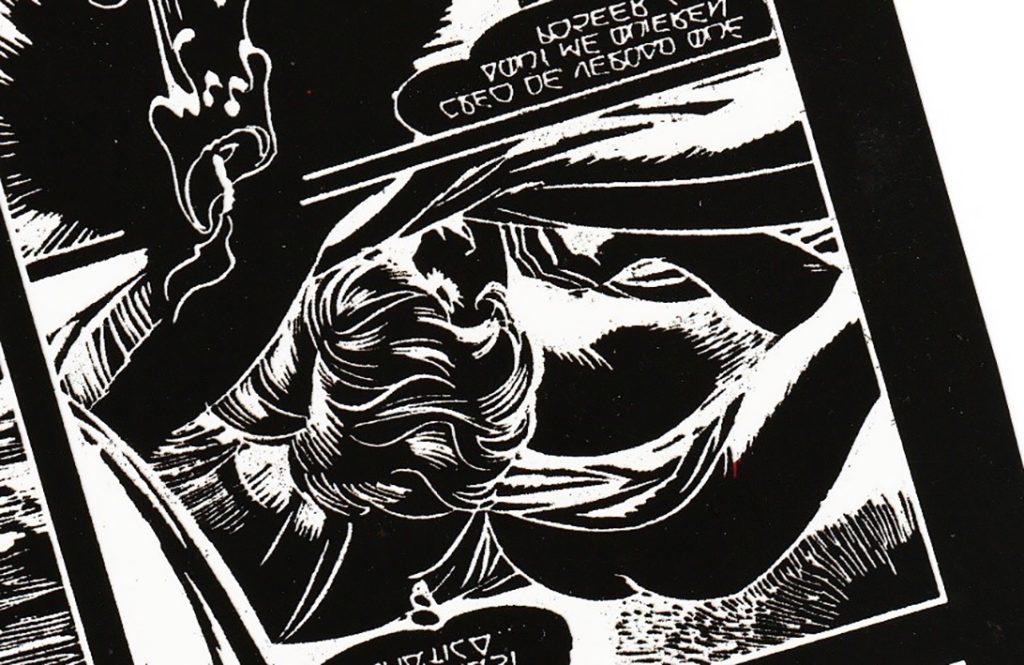
Fragment of acetate prints on which she based her works. ©Juana Anzellini
The comics are sexist and macho—so absurd that they are almost laughable, she says. But Juana has managed to identify cracks. For example, a female werewolf, Ulula, does photo shoots worldwide. She transforms into a wolf and a beast when night falls, devouring men and women. She always has a lover by her bedside. There are also comics about truck drivers and other unsavory characters[5]. While she told me all of this, we remembered Condorito, with its erotic and political undertones. (Condorito is a Chilean comic known worldwide, created in 1949.)
The Soft Porn catalog includes works from 2018 and features texts by Wilson and Ana María Millán[6].
Juana arrived in Berlin in 2015, and this project was part of her master’s degree at the Academy of Fine Arts Leipzig (Hochschule für Grafik und Buchkunst), specializing in graphic arts and painting.
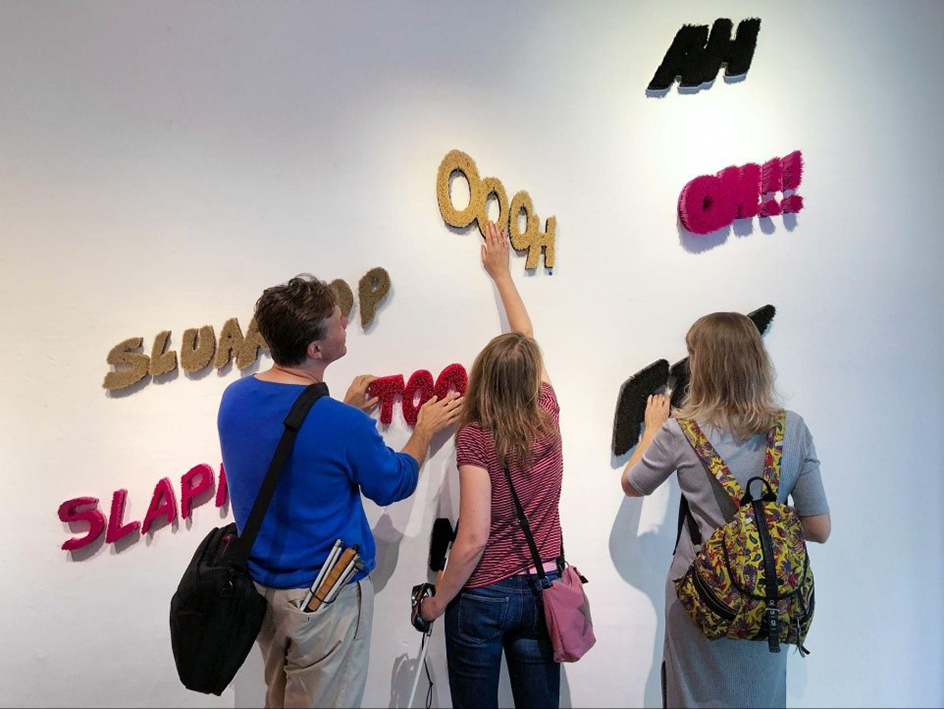
©Regina Kelaita
She describes the process as experimental. “For the paintings I made for this project, I used acetate sheets made from original comic print matrices that my grandfather imported. I began projecting these acetates onto the canvas with an overhead projector, and from there, I started painting.” Her aunt’s previous experience with collages gave her the freedom to deconstruct the images without feeling pity. She works with acrylics and oils.
Daniel: Juana, how do blind people relate to your work?
Juana: “There’s perhaps a conceptual dilemma—how can I make someone who cannot see access what I do, mostly graphic art and painting? One of the paintings includes audio, a collage of erotic salsa. It’s a very complex issue, and I worry a lot about it. For example, Gregorio (the man I met outside the library) liked the brushwork. Or, in other cases, a friend brought blind friends to an exhibition. I was nervous about how they would connect with the work.”
In closing, we discussed the complex and particular relationship between pornography and blindness. This oxymoron opens up a new field of sensations and ways to approach such a taboo subject in the social sphere, as pornography and sexuality have traditionally been.
A few weeks after our conversation, Juana very kindly sent me the Soft Porn catalog and the Andere Koordinaten publications of interviews with people with visual impairments to my address in Manizales. I met Juana during my university years through mutual colleagues and friends.
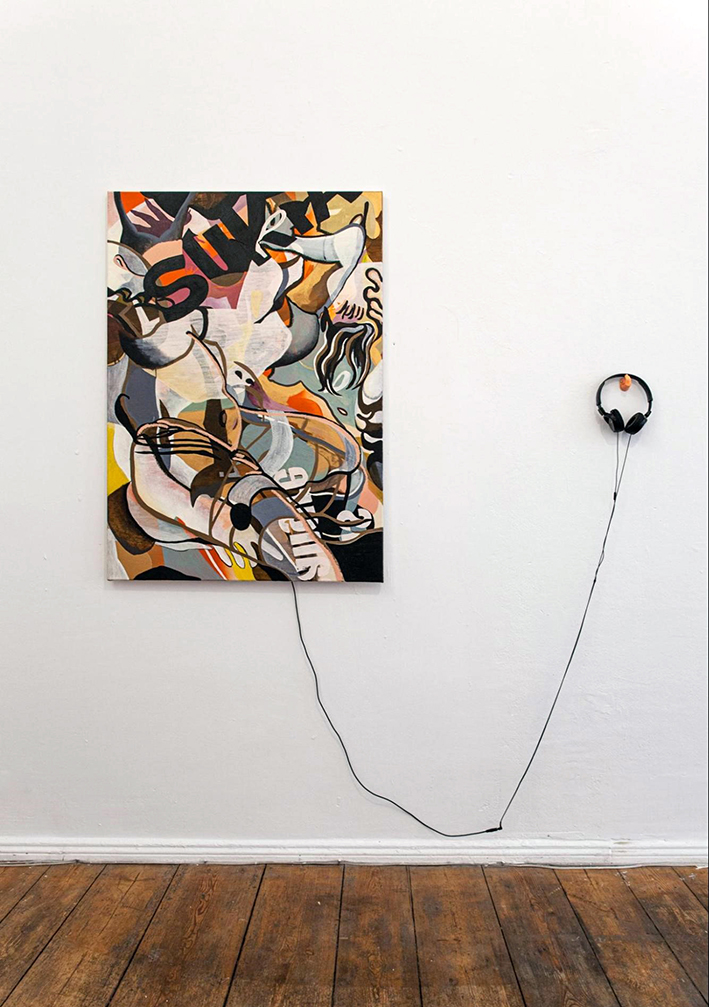
©Regina Kelaita
[1] Manizales, June 6, 2022. Spoken portrait of Juana Anzellini from her studio in Berlin. Revised and republished for this medium on December 5, 2024 from Chinchiná, Caldas.
[2] The “Pico y Placa” is a common rotation system in Colombia that restricts the circulation of vehicles based on the final numbers on their license plates. This measure aims to reduce street congestion during high-traffic hours and contribute to preserving the environment.
[3] Wilson Díaz was born in Pitalito, Colombia, in 1963. He studied Fine Arts at the National University of Colombia, Bogotá. His work is based on the Colombian sociopolitical situation and investigates the country’s complex historical, social, and political context since the 1980s. Through artistic operations such as the appropriation of images from the mass media or historical images of varying importance that Díaz himself documents and uses as a source in various projects, where painting, drawing, video, actions, and writing, among others, are involved. Taken from website. Instituto de la Visión. https://institutodevision.com/artistas/wilson-diaz/ Last visit 2014.
[4] The grandfather’s project reached that place.
[5] In Spanish, the author uses the word “guarro” to refer to a rude person without manners. The strict usage, according to the Royal Spanish Academy, refers to a pig.
[6] Wilson Díaz and Ana María Millán are members of the Helena Producciones collective, creators, along with other artists from Cali, of the Performance festival, including Leonardo Herrera – Juan David Medina – Giovanni Vargas – Juan Carlos Melo – Ernesto Ordóñez – Diana Lasso – Marcela Gómez – Mauricio Vera – Yohanna M Roa- Alberto Campuzano. For more information, see http://www.helenaproducciones.org/cv_quienes_son_helena.php
